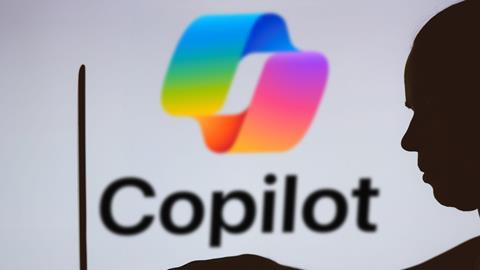Looking back at the first generation of legal AI shows how dramatically the profession’s tech scene has changed
As ChatGPT celebrated its second anniversary on 30 November, it is worth looking back at the first generation of legal AI to realise how dramatically the legal tech scene has changed. Although legal AI pioneers such as Kira and Luminance are now embedded in mainstream legal tech, initially it seemed that firms were more interested in launching legal tech incubators than piloting new products.

Michael Kennedy, head of innovation and legal technology – research and development at Addleshaw Goddard, says early legal AI founders were operating in a different business environment: ‘Now, legal tech is a much bigger space, with lots of firms, vendors and individuals engaged and invested in using technology to drive change… [and] innovation teams working alongside IT as a dedicated resource.
‘Another big difference is the investment available to not just start a legal tech company but to also scale it. When we were starting our machine-learning journey and licensed Kira, there were only a couple of tools on the market and they were bootstrapped start-ups, but as they grew, investment enabled them to scale through funding stages which eventually led to acquisition. Now start-ups like Harvey and Leya have huge backing and can go to market much quicker than their predecessors.’
GenAI was launched into a legal sector that was ready to embrace it. Firms have followed a common adoption playbook: building internal chatbots on OpenAI GPT models while simultaneously piloting commercial GenAI tools (such as Microsoft Copilot) inside the firewall.
Partnering with start-ups
This time around, firms are open to working with start-ups. But while they have the opportunity to influence product development, they also need to consider the likelihood that their chosen vendor will be acquired by a larger provider. This year has seen a lot of M&A activity, including Litera acquiring Office & Dragons, Law Insider acquiring oneNDA, LexisNexis acquiring Henchman and Docusign acquiring Lexion.
‘It just comes with the territory,’ says Joe Cohen, director of advanced client solutions at Charles Russell Speechlys. ‘Although I have had a couple of bad experiences with products being purchased and then subsequently changed or retired, it’s not really an option to wait and see what the big vendors do.’
‘We need to accept that we are in uncharted territory and can’t have detailed roadmaps for implementation as we might have done 10 years ago,’ says Charles Russell Speechlys’ director of knowledge Aileen Johnson. ‘Things are moving so quickly that a “wait and see” approach isn’t viable. Deploying [GenAI] early has enabled us to get people moving on the journey. Gathering usage data means that we can begin to build our jigsaw around that.’
Christopher Tart-Roberts, head of lawtech and chief knowledge and innovation officer at Macfarlanes, says: ‘There are more things to consider when working with start-ups: commercial risk and long-term viability are important, particularly where you’re looking at widespread deployment. But the opportunities can be significant. Partnering early allows you to influence how the product develops, and mould and shape it to your needs.’
'Things are moving so quickly that a ‘wait and see’ approach isn’t viable. Deploying [GenAI] early has enabled us to get people moving on the journey'
Aileen Johnson, Charles Russell Speechlys
‘We have worked with start-ups and scale-ups for years at Addleshaws and it’s always great seeing new ideas and better execution come to market,’ says Kennedy. ‘It also keeps the bigger players on their toes and hopefully the whole industry driving forwards.’

Hélder Santos, head of legal tech and innovation at Bird & Bird, outlines the benefits: ‘Start-ups and scale-ups offer innovative solutions to legal challenges, with their agility allowing them to adapt swiftly.’ However, he is also cognisant of the challenges. ‘Integrating new technologies into existing systems can take a lot of work. Effective planning and execution are crucial to ensure a seamless transition, which necessitates thorough staff training.
‘Start-ups also need to convincingly demonstrate their ability to scale solutions in line with the firms’ demands. The technology must be capable of managing the volume and complexities of a firm’s operations without sacrificing performance. And given the sensitive nature of the information handled by the legal sector, it is vital that any new tools strictly adhere to data security and privacy regulations.’
Emma Sorrell, innovation manager at Burges Salmon, included start-ups in the firm’s new digital enablement programme: ‘We have always considered each legal tech proposition on its merits regardless of the size of the vendor. What has changed is that legal tech is growing in importance… and there are more vendors [offering] AI solutions, together with existing suppliers building GenAI elements into their products. What is important … is that we invest in the right technologies for our specific needs, ensuring they align with our strategic goals and provide tangible benefits.’
The write stuff
GenAI in law firms is not just for lawyers. It can also be applied to legal marketing and communications. Sarah-Jane Howitt, partner and business development and marketing director at Weightmans, uses GenAI to help lawyers write thought leadership pieces by engaging their traditional redlining skills. ‘We use Copilot to create a first draft and we then ask the lawyers to mark it up,’ she says. She used Canva to create what is effectively a style guide, to ensure that all output is consistent and in the Weightmans ‘tone of voice’.
Weightmans is also testing Copilot for writing bids, using information from across the firm’s systems. However, there are challenges around data quality. ‘We wouldn’t want Copilot pulling in outdated content,’ explains Howitt.
While Copilot is adding value, it is creating the need for different skills. ‘If we use Copilot to create first drafts, we then need people to check whether the output is good enough to go to a lawyer,’ she says.
Value-add of GenAI
After two years of adopting GenAI, it still represents a significant investment that has yet to replace any people or legacy tech. Ultimately, is it about speed, efficiency and pricing – or something else?
Tom Whittaker, director and solicitor advocate at Burges Salmon who advises on AI regulation, says: ‘Legal tech does provide more options around speed, efficiency and pricing. However, it also changes the dial on a number of other factors. It ultimately provides clients with more options around types of analysis and output, the stage at which they instruct us to do so, and where lawyers can provide their expert insight. Our expert teams can then identify the right teams and tools tailored to the matter.’
‘Underpinning all of this is developing the skills of our people,’ says Johnson. ‘Our internal business school is now in its fifth year. This has been a great foundation. There is a huge emphasis on supporting all our people not only to adapt to change, but to embrace it and use it to unlock opportunities.’
2025 and beyond
Looking ahead to 2025 and beyond, when GenAI is embedded into business as usual, what are its prospects for innovation?
Tart-Roberts says: ‘Now that GenAI is supporting our lawyers on a range of incremental, everyday tasks, our main focus turns to leveraging it on larger workstreams. This will involve much more radical change to the way we work, and the potential gains are significant. Most likely this will require us to blend capabilities from across our tech stack to form end-to-end, task-based solutions, and our legal technologists will increasingly become part of our deal teams to manage those. Bringing GenAI to the frontline of client service delivery is also a big priority for 2025.’
GenAI will continue to bring competitive advantage. ‘There will come a point when all law firms are using GenAI effectively,’ acknowledges Cohen. ‘The next step will be bots or agents, which many including us are already leveraging, but even that will become commonplace. In my view, there is significant value to be captured in building your own software, and leveraging your own legal expertise/process knowledge to create unique solutions for your clients that are driven by GenAI.’
Santos says: ‘We will see increased productivity and efficiency driven by GenAI, significant investments in IT and data strategies, and a focus on overcoming challenges related to implementation and cyber risks. The adoption of GenAI will vary across different tiers of law firms, with larger firms leading the way in leveraging these technologies for growth and efficiency.’
‘If everyone gets the hang of applying GenAI properly it will be great for the industry,’ says Kennedy. ‘As people get more skills, more imaginative use cases will emerge. We are still in a period of people trying to do real stuff with GenAI and maybe falling down due to not having the right people or skills, but at Addleshaws we are already delivering results and will hopefully achieve even more in 2025.’
Burges Salmon is adopting a broader approach to innovation. ‘Our digital enablement programme is not just about GenAI or tech; it has a broader scope, focusing on optimising processes, a robust data strategy to leverage data-driven insights and innovative approaches,’ says Sorrell. ‘The legal tech landscape is rapidly evolving, and we aim to integrate technologies that align with our strategic objectives. Our goal is to stay competitive by leveraging the best available tools and continuously improving our processes to deliver meaningful outcomes for our clients.’
ChatGPT’s second anniversary was swiftly followed by cyber Monday. At Digital Law’s 10th anniversary, founder and managing partner Peter Wright highlighted the new risks and challenges brought by GenAI and other emerging technology. This focus underlines the rationale that the EU AI Act’s digital literacy requirement should ideally apply beyond ‘people involved in the operation and use of AI system’ – because AI affects us all.
































No comments yet